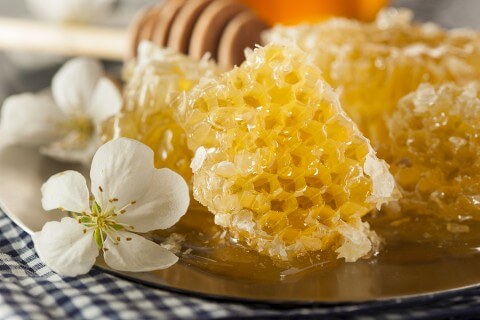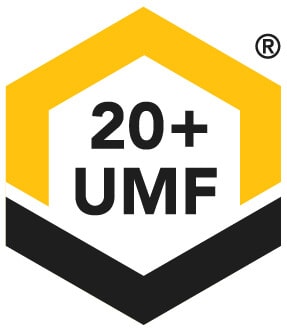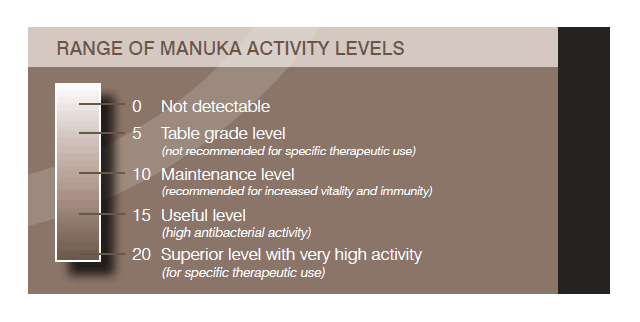certified by the New Zealand Unique Manuka Factor Honey Association (UMFHA), www.umf.org/nz/umf-members
UMFHA Members:
Who are their Licensees?
There are over 70 beekeepers, producers and exporters that are qualified and accredited to display the UMF® mark on Manuka Honey products. Look for the quality mark on the label and check to see if the Manuka Honey product is from a registered license-holder follows industry-leading standards to work from and access to a quality trademark – UMF® – which gives consumers confidence that they are buying genuine Manuka Honey.
This Manuka Honey is produced by Waitemata Honey Co Limited, Licence # 1014
Manuka honey, produced in New Zealand by bees that pollinate the Manuka bush, is one of the most unique and beneficial forms of honey in the world. There are many Manuka honey uses that range from healing sore throats and digestive illnesses, to curing Staph infections and gingivitis.
Because of industrialization, honey isn’t what it used to be. Like most things today, not all honeys are created equal. As a rule of thumb, you get what you pay for. Most products at conventional supermarkets are not much different from high fructose corn syrup. To get good honey today, you pretty much have to go to your local health food store, local farm co-op or go online to purchase the real deal.
Manuka Honey Nutrition Facts
What makes Manuka honey different is its amazing nutritional profile. Generally speaking, honey is a rich source of: Amino acids
- B vitamins (B6, thiamin, niacin, riboflavin, pantothenic acid)
- Calcium

- Copper
- Iron
- Magnesium
- Manganese
- Phosphorus
- Potassium
- Sodium
- Zinc
Yet with Manuka honey, the nutritional content is up to 4 times that of normal flower honeys. This is what is called the Unique Manuka Factor.
Unique Manuka Factor
 In 1981, researchers at the New Zealand University of Waikato discovered that Manuka honey has a considerably higher level of enzymes than regular honey. These enzymes create a natural hydrogen peroxide that works as an antibacterial. Some strains of this New Zealand honey are particularly rich in hydrogen peroxide, methylglyoxal and dihydroxyacetone.
In 1981, researchers at the New Zealand University of Waikato discovered that Manuka honey has a considerably higher level of enzymes than regular honey. These enzymes create a natural hydrogen peroxide that works as an antibacterial. Some strains of this New Zealand honey are particularly rich in hydrogen peroxide, methylglyoxal and dihydroxyacetone.
This medicinal trilogy helps make up what is referred to as the Unique Manuka Factor (UMF), a global standard in identifying and measuring the antibacterial strength of Manuka. Essentially, the UMF is a guarantee that the honey being sold is of a medicinal quality.
UMF is not found in the nectar of all Manuka flowers and, comparatively speaking, regular Manuka only contains the hydrogen peroxide antibacterial property that is common to most types of honey.
What separates UMF Manuka from other Manuka varieties is that it has both the natural hydrogen peroxide and its own natural UMF antibacterial property, which greatly enhances it effectiveness. The UMF properties of Manuka is extremely stable and, unlike the hydrogen peroxide common in most honey, is not easily destroyed by heat, light and enzymes in the body.
How to Verify Genuine UMF Manuka Honey
The minimum UMF rating recognized is UMF5, however, it is not considered beneficial unless it carries a UMF 10+ level of antibacterial activity in the honey. Anything ranging from UMF10-UMF15 is a useful level, and anything UMF16 and up is considered a superior quality.
Genuine UMF Manuka Honey will have these four things:
- It will have a UMF trademark clearly labeled on the front of the container.

- It will be from a New Zealand UMF licensed company and labelled in New Zealand.
- It will have the UMF company’s name and license number on the label.
- It will have a UMF rating number of 5-16+. If it is labeled without the UMF or without a number, then it is not the genuine article.
According to the UMF association the UMF rating actually tests the antibacterial performance of a honey and compares it to phenol, a disinfectant.
“The presence of the special non-peroxide activity can be detected only by an array of scientific testing directly relating to the phenol standard. The rating has a one-to-one relationship to the phenol standard. “
This means that a UMF rating of 20+ is equivalent in strength to a 20% solution of phenol. The ideal UMF rating varies depending on your purpose, but laboratory studies have shown that Manuka honey with a non-peroxide activity level of UMF®12 to UMF®15 is effective against a wide range of very resistant bacteria.
Here is an explanation of what manuka honey UMF you should use:
0-4 Non-therapeutic
4-9 Maintenance level with general honey health benefits
10-14 Supports natural healing and bacterial balance
15+ Superior levels of phenols that are highly therapeutic but shouldn’t exceed taking 1 tbsp at a time
